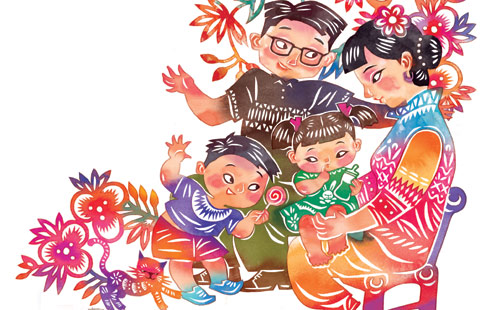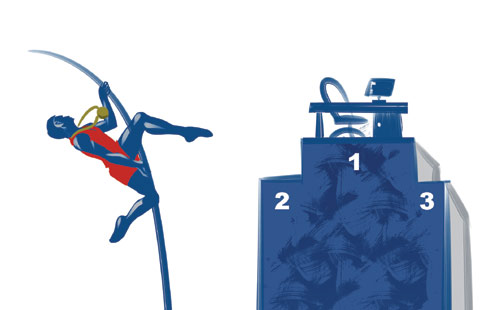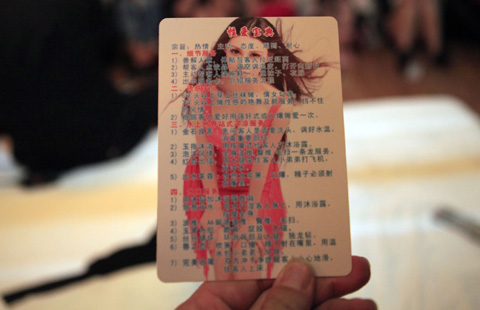Book series explores challenges of today's microfinance
Updated: 2014-02-18 07:17
By Mei Jia (China Daily)
|
||||||||
Originally created to alleviate poverty, microfinance in China is flourishing as the country undergoes reforms aimed at providing financial services that have long been lacking in rural areas.
Microfinance got a boost here when commercial companies were allowed to make such loans in 2005, but professionals and experts are worried that the concept may be going astray - fearing that people in need may not really be able to get the loans for their self-development.
A series of five books titled Microfinance in China has been produced by the China Foundation for Poverty Alleviation, with experts and scholars who have been investigating the issues systematically.
Organized by CFPA Microfinance, the series discusses the nature of microfinance in China and explores its future path.
"We intend to offer full information for policymakers and to promote healthy development of microfinance in the country," the editors say.
Pan Xilong, from Southwestern University of Finance and Economics and author of one of the five books, knows the situation in rural China well. He says good intentions are not always enough to cope with complex situations.
Pan sites one example: a senior herdsman he met in Qinghai province. "He gave up a governmental subsidy of 100 yuan ($16.50) because he told me that the money can barely cover his traveling expenses if he was to claim it in cash from the designated spots," Pan says.
Since the 1980s, microfinance, with its more flexible modes (than merely giving subsidies in cash), has offered one way of nonprofit administrative intervention.
Since Muhammad Yunus embraced the concept as an experiment in rural Bangladesh - and won a Nobel Prize for that successful effort - microfinance has provided loans for entrepreneurs and small businesses that lacked access to banking and related services.
The relationships could be individual or group-based models, in which several entrepreneurs jointly apply for loans and other services.
China has tried many ways of alleviating poverty, and in 2005, 10 commercialized companies were authorized to run such a business. By June 2013, according to Pan, the number of companies dealing with microfinance had increased to 7,086, with loans of up to 704.3 billion yuan.
"It seems China has been turned into the world's most exciting place for micro-loans overnight," says He Daofeng, chairman of CFPA Microfinance and chief editor of the book series.
CFPA Microfinance, in 17 years of practicing in Chinese rural areas, has trained local middle-aged women as its loan officers, and "applied the power of familial connections in the small communities as a way to ensure repayments", says He.
But the situation has grown complicated as it's become commercial, and nonprofit poverty alleviation has struggled to separate the definitions of "nonprofit microfinance", "commercial microfinance" and "nonprofit microfinance operated in commercial ways", He adds.
"The separation itself is a joke, as middle- and small-sized companies began to borrow funds created in the name of microfinance," He says.
He also notes that in the rural areas, this "easy money" with ultra-low interest (from the government) tends to be embezzled before it really gets to the people who need it.
"At the top, the officials mean well; and at the bottom, people seek realistic interest they can obtain," he says.
Working in poverty relief since 1986, Renmin University's Kang Xiaoguang is among the experts who hold that to stop the current mess, microfinance should strictly follow the course originally intended for it.
Kang and other authors of the series believe financial service creates chance for increasing social equality, and say the goal of administrators should be making sure the disadvantaged people have a sustainable way to eventually repay the "high-risk" credit loans without collateral.
"We believe, instead of worrying about the disadvantaged people's repaying ability and their credits, we should make the loan obtainer self-reliant by first offering them the chance," says He Xuefeng, another of the book authors.
meijia@chinadaily.com.cn
(China Daily 02/18/2014 page22)

 Gorgeous Liu Tao poses for COSMO magazine
Gorgeous Liu Tao poses for COSMO magazine
 Post-baby Duchess
Post-baby Duchess
 Victoria Beckham S/S 2014 presented during NYFW
Victoria Beckham S/S 2014 presented during NYFW
 'Despicable' minions upset Depp's 'Lone Ranger' at box office
'Despicable' minions upset Depp's 'Lone Ranger' at box office
 'Taken 2' grabs movie box office crown
'Taken 2' grabs movie box office crown
 Rihanna's 'Diamonds' tops UK pop chart
Rihanna's 'Diamonds' tops UK pop chart
 Fans get look at vintage Rolling Stones
Fans get look at vintage Rolling Stones
 Celebrities attend Power of Women event
Celebrities attend Power of Women event
Most Viewed
Editor's Picks

|

|

|

|

|

|
Today's Top News
Envoy begins four-day visit to DPRK
Hainan boosts tourism to Xisha
Policeman gets death sentence for shooting
Woman claims legislator is her child's father
Beijing calls on Tokyo to return plutonium to US
Xi calls on leaders to carry out new reforms
Trade inquiry creates friction
Bigger Chinese role in the Arctic
US Weekly

|

|







